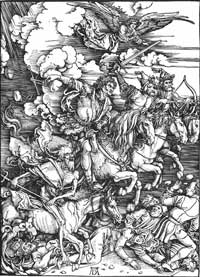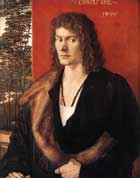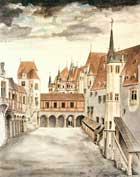Albrecht Dürer Woodcuts: Like Never Before
Albrecht Dürer’s woodcuts, one hundred and seventy four in number according to Heller, made him famous across all European countries of his time. There are many more works bearing his mark, and assigned by other authors to him.

The Four Horsemen of the Apocalypse
Woodcutting, which implies designing on wood, was for Dürer the ideal way to express his thoughts, and disseminate his ideas.
He has done more for the art of woodcut than any other artist. Before his time no artist had ever employed it for the expression of any great thought: representations of saints and small illustrations to religious books were the only subjects entrusted to the hands of the woodcut artist.
Did Dürer really cut himself the woodblocks of the woodcuts bearing his monogram? The question generated a long dispute, spanning centuries. It is now generally accepted that Dürer drew the designs on wood, leaving the mechanical part of the work to be executed by a Formschneider (woodblock cutter) of Nuremberg.
One of the strongest points made in support of this conclusion is the fact that Dürer left many accounts of his life, mentioning various kinds of work on which he was employed. He appears as a painter, a designer, an editor of works engraved on wood, but never as a woodcut artist.
However, we can accept that the artist did not cut the woodblocks for all his woodcuts, but it is too much to accept that he absolutely did not cut any of them. With the considerable amount of woodcuts and wood carving carried on in Michael Wolgemut’s workshop, Dürer acquired the skills and knowledge of the art of woodcutting.
It is possible that in his early years as an artist, he executed his first woodcuts himself. As he gained fame, and the number of commissions increased substantially, the lack of time probably made him to entrust the mechanical part of the work to the block cutters.
Dürer’s earliest woodcuts, bearing his monogram, are the sixteen folio cuts illustrating the Apocalypse, first published in 1498, one of the most powerful works of the cycle being The Four Horsemen of the Apocalypse. Both their design and execution were superior to all woodcuts known at the time. Their superiority is due to the noble artistic spirit in which they are conceived, and the skilful manner in which they are executed. The boldness of the cuts is the result of the skill of the woodcutter combined with the drawing genius of their designer.
Dürer raised the art of woodcut to a position never seen before. His masterpieces even imposed the “fashion” of multiplying art works, and great artists like Lucas Cranach or Holbein made use of woodcuts. It appears that, under Dürer’s influence, even Titian put aside his colors at least one time, so he could draw in simple black and white on the wood block.
Especially with the series of the Apocalypse, the high degree of artist’s knowledge and the bold designer hand are way above anything a simple block-cutter could create, no matter how good his mechanical skill and accuracy were.
So we might naturally conclude that Dürer not only designed but executed the early woodcuts himself, as only he could have been such a good Formschneider with an artist’s soul.



